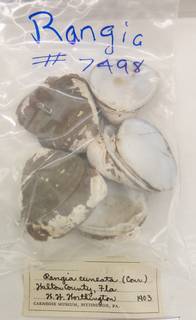WoRMS taxon details
Rangia cuneata (G. B. Sowerby I, 1832)
156991 (urn:lsid:marinespecies.org:taxname:156991)
accepted
Species
Gnathodon cuneatus G. B. Sowerby I, 1832 · unaccepted > superseded combination (also incorrect grammatical...)
also incorrect grammatical agreement of specific epithet
Gnathodon cuneatus var. nasutus Dall, 1884 · unaccepted > junior subjective synonym
Gnathodon nasutus Dall, 1884 · unaccepted > junior subjective synonym
Rangia cyrenoides Des Moulins, 1832 · unaccepted
(of Gnathodon cuneatus G. B. Sowerby I, 1832) Sowerby I, G. B. (1821-1834). <i>The genera of recent and fossil shells, for the use of students, in conchology and geology</i>. Published in 42 parts. Vol. 1, pls 1-126 [1821-1825]; vol. 2, pls 127-262 + text (unpaginated) [1825-1834]. London: G. B. Sowerby. , available online at https://www.biodiversitylibrary.org/page/45486673
page(s): pl. 40 [details]
page(s): pl. 40 [details]
Distribution Distribution of the subprovince extends northward of Carolinian, Cape Hatteras through Florida
Distribution Distribution of the subprovince extends northward of Carolinian, Cape Hatteras through Florida [details]
MolluscaBase eds. (2024). MolluscaBase. Rangia cuneata (G. B. Sowerby I, 1832). Accessed through: World Register of Marine Species at: https://marinespecies.org/aphia.php?p=taxdetails&id=156991 on 2024-11-14
Date
action
by
![]() The webpage text is licensed under a Creative Commons Attribution 4.0 License
The webpage text is licensed under a Creative Commons Attribution 4.0 License
original description
(of Gnathodon cuneatus G. B. Sowerby I, 1832) Sowerby I, G. B. (1821-1834). <i>The genera of recent and fossil shells, for the use of students, in conchology and geology</i>. Published in 42 parts. Vol. 1, pls 1-126 [1821-1825]; vol. 2, pls 127-262 + text (unpaginated) [1825-1834]. London: G. B. Sowerby. , available online at https://www.biodiversitylibrary.org/page/45486673
page(s): pl. 40 [details]
original description (of Rangia cyrenoides Des Moulins, 1832) Des Moulins C. (1832). Description d'un genre nouveau de coquille bivalve. <i>Actes de la Société Linnéenne de Bordeaux 5(4)</i>: 48-58, 1 pl. [details]
original description (of Gnathodon cuneatus var. nasutus Dall, 1884) Dall, W. H. (1894). Monograph of the genus Gnathodon Gray (Rangia, Desmoulins). <em>Proceedings of the United States National Museum.</em> v. 17, p. 89-106., available online at https://www.biodiversitylibrary.org/page/15675085#page/121/mode/1up
page(s): 98 [details]
context source (Introduced species) Katsanevakis, S.; Bogucarskis, K.; Gatto, F.; Vandekerkhove, J.; Deriu, I.; Cardoso A.S. (2012). Building the European Alien Species Information Network (EASIN): a novel approach for the exploration of distributed alien species data. <em>BioInvasions Records.</em> 1: 235-245., available online at http://easin.jrc.ec.europa.eu [details] Available for editors [request]
[request]
context source (MSBIAS) MEDIN. (2011). UK checklist of marine species derived from the applications Marine Recorder and UNICORN. version 1.0. [details]
context source (Schelde) Maris, T.; Beauchard, O.; Van Damme, S.; Van den Bergh, E.; Wijnhoven, S.; Meire, P. (2013). Referentiematrices en Ecotoopoppervlaktes Annex bij de Evaluatiemethodiek Schelde-estuarium Studie naar “Ecotoopoppervlaktes en intactness index”. <em>Monitor Taskforce Publication Series, 2013-01. NIOZ: Yerseke.</em> 35 pp. (look up in IMIS) [details]
basis of record Pollock, L.W. (1998). A practical guide to the marine animals of northeastern North America. Rutgers University Press. New Brunswick, New Jersey & London. 367 pp., available online at http://books.google.com/books?id=i1AmT31cuR4C [details]
additional source Verween, A.; Kerckhof, F.; Vincx, M.; Degraer, S. (2006). First European record of the invasive brackish water clam Rangia cuneata (G.B Sowerby I, 1831) (Mollusca: Bivalvia). <em>Aquatic Invasions.</em> 1(4): 198-203., available online at http://www.aquaticinvasions.ru/2006/AI_2006_1_4_Verween_etal.pdf [details]
additional source Turgeon, D. D., W. G. Lyons, P. Mikkelsen, G. Rosenberg, and F. Moretzsohn. 2009. Bivalvia (Mollusca) of the Gulf of Mexico, Pp. 711–744 in Felder, D.L. and D.K. Camp (eds.), Gulf of Mexico–Origins, Waters, and Biota. Biodiversity. Texas A&M Press, Colleg [details] Available for editors [request]
[request]
additional source Huber, M. (2010). <i>Compendium of bivalves. A full-color guide to 3,300 of the world's marine bivalves. A status on Bivalvia after 250 years of research</i>. Hackenheim: ConchBooks. 901 pp., 1 CD-ROM. (look up in IMIS) [details]
additional source Wiese L., Niehus O., Faass B. & Wiese V. (2016). Ein weiteres Vorkommen von <i>Rangia cuneata</i> in Deutschland (Bivalvia: Mactridae). <em>Schriften zur Malakozoologie.</em> 29: 53-60. [details]
additional source Verrill, A. H. (1947). Additions to the Mollusca of Lake Worth, Florida. <em>The Nautilus.</em> 61(2): 47-48., available online at https://www.biodiversitylibrary.org/page/8284747
page(s): 48 [details]
additional source Gallagher, J. L. & Wells, H. W. (1969). Northern range extension and winter mortality of <i>Rangia cuneata</i>. <em>The Nautilus.</em> 83(1): 22-25., available online at https://www.biodiversitylibrary.org/page/8515286 [details]
additional source Counts, C. L., III. (1980). <i>Rangia cuneata</i> in the industrial water system (Bivalvia: Mactridae). <em>The Nautilus.</em> 94(1): 1-2., available online at https://www.biodiversitylibrary.org/page/8274495 [details]
additional source Metcalf, A. L. (1980). Fossil <i>Rangia cuneata</i> (Mactridae) in Eddy County, New Mexico. <em>The Nautilus.</em> 94(1): 2-3, figs. 1-2., available online at https://www.biodiversitylibrary.org/page/8274496 [details]
additional source Hill, F. C. (1983). Unexplained occurrence of the mactrid bivalve, <i>Rangia cuneata</i>, from the Arrowhead Farms Indian Site near Louisville, Kentucky. <em>The Nautilus.</em> 97(2): 79-81, fig. 1., available online at https://www.biodiversitylibrary.org/page/8274781 [details]
page(s): pl. 40 [details]
original description (of Rangia cyrenoides Des Moulins, 1832) Des Moulins C. (1832). Description d'un genre nouveau de coquille bivalve. <i>Actes de la Société Linnéenne de Bordeaux 5(4)</i>: 48-58, 1 pl. [details]
original description (of Gnathodon cuneatus var. nasutus Dall, 1884) Dall, W. H. (1894). Monograph of the genus Gnathodon Gray (Rangia, Desmoulins). <em>Proceedings of the United States National Museum.</em> v. 17, p. 89-106., available online at https://www.biodiversitylibrary.org/page/15675085#page/121/mode/1up
page(s): 98 [details]
context source (Introduced species) Katsanevakis, S.; Bogucarskis, K.; Gatto, F.; Vandekerkhove, J.; Deriu, I.; Cardoso A.S. (2012). Building the European Alien Species Information Network (EASIN): a novel approach for the exploration of distributed alien species data. <em>BioInvasions Records.</em> 1: 235-245., available online at http://easin.jrc.ec.europa.eu [details] Available for editors
context source (MSBIAS) MEDIN. (2011). UK checklist of marine species derived from the applications Marine Recorder and UNICORN. version 1.0. [details]
context source (Schelde) Maris, T.; Beauchard, O.; Van Damme, S.; Van den Bergh, E.; Wijnhoven, S.; Meire, P. (2013). Referentiematrices en Ecotoopoppervlaktes Annex bij de Evaluatiemethodiek Schelde-estuarium Studie naar “Ecotoopoppervlaktes en intactness index”. <em>Monitor Taskforce Publication Series, 2013-01. NIOZ: Yerseke.</em> 35 pp. (look up in IMIS) [details]
basis of record Pollock, L.W. (1998). A practical guide to the marine animals of northeastern North America. Rutgers University Press. New Brunswick, New Jersey & London. 367 pp., available online at http://books.google.com/books?id=i1AmT31cuR4C [details]
additional source Verween, A.; Kerckhof, F.; Vincx, M.; Degraer, S. (2006). First European record of the invasive brackish water clam Rangia cuneata (G.B Sowerby I, 1831) (Mollusca: Bivalvia). <em>Aquatic Invasions.</em> 1(4): 198-203., available online at http://www.aquaticinvasions.ru/2006/AI_2006_1_4_Verween_etal.pdf [details]
additional source Turgeon, D. D., W. G. Lyons, P. Mikkelsen, G. Rosenberg, and F. Moretzsohn. 2009. Bivalvia (Mollusca) of the Gulf of Mexico, Pp. 711–744 in Felder, D.L. and D.K. Camp (eds.), Gulf of Mexico–Origins, Waters, and Biota. Biodiversity. Texas A&M Press, Colleg [details] Available for editors
additional source Huber, M. (2010). <i>Compendium of bivalves. A full-color guide to 3,300 of the world's marine bivalves. A status on Bivalvia after 250 years of research</i>. Hackenheim: ConchBooks. 901 pp., 1 CD-ROM. (look up in IMIS) [details]
additional source Wiese L., Niehus O., Faass B. & Wiese V. (2016). Ein weiteres Vorkommen von <i>Rangia cuneata</i> in Deutschland (Bivalvia: Mactridae). <em>Schriften zur Malakozoologie.</em> 29: 53-60. [details]
additional source Verrill, A. H. (1947). Additions to the Mollusca of Lake Worth, Florida. <em>The Nautilus.</em> 61(2): 47-48., available online at https://www.biodiversitylibrary.org/page/8284747
page(s): 48 [details]
additional source Gallagher, J. L. & Wells, H. W. (1969). Northern range extension and winter mortality of <i>Rangia cuneata</i>. <em>The Nautilus.</em> 83(1): 22-25., available online at https://www.biodiversitylibrary.org/page/8515286 [details]
additional source Counts, C. L., III. (1980). <i>Rangia cuneata</i> in the industrial water system (Bivalvia: Mactridae). <em>The Nautilus.</em> 94(1): 1-2., available online at https://www.biodiversitylibrary.org/page/8274495 [details]
additional source Metcalf, A. L. (1980). Fossil <i>Rangia cuneata</i> (Mactridae) in Eddy County, New Mexico. <em>The Nautilus.</em> 94(1): 2-3, figs. 1-2., available online at https://www.biodiversitylibrary.org/page/8274496 [details]
additional source Hill, F. C. (1983). Unexplained occurrence of the mactrid bivalve, <i>Rangia cuneata</i>, from the Arrowhead Farms Indian Site near Louisville, Kentucky. <em>The Nautilus.</em> 97(2): 79-81, fig. 1., available online at https://www.biodiversitylibrary.org/page/8274781 [details]
 Present
Present  Present in aphia/obis/gbif/idigbio
Present in aphia/obis/gbif/idigbio  Inaccurate
Inaccurate  Introduced: alien
Introduced: alien  Containing type locality
Containing type locality
From regional or thematic species database
Introduced species vector dispersal in Belgian part of the North Sea : Shipping [details]Introduced species vector dispersal in Belgian part of the North Sea: Ships: accidental with ballast water, sea water systems, live wells or other deck basins [details]
Introduced species vector dispersal in Belgian part of the North Sea: Ships: accidental with ballast water, sea water systems, live wells or other deck basins [details]
Unreviewed
Alien species The Atlantic Rangia or wedge clam Rangia cuneata originates from the Gulf of Mexico. From there this bivalve colonized the Atlantic coast of North-America and Europe. The species was first reported in Europe in August 2005 in the Harbour of Antwerp. Introduction most likely happened through transport of larvae in ballast water of ships. The species mainly live in estuaries, brackish and freshwater. In ports, the Atlantic Rangia can become a pest as it establishes itself in industrial cooling pipes where it can obstruct optimal water flow. [details]Distribution Distribution of the subprovince extends northward of Carolinian, Cape Hatteras through Florida [details]
| Language | Name | |
|---|---|---|
| Dutch | Amerikaanse strandschelp | [details] |
| English | wedge clamcommon rangiaAtlantic rangia | [details] |
To Barcode of Life (21 barcodes)
To Biodiversity Heritage Library (43 publications) (from synonym Rangia cyrenoides Des Moulins, 1832)
To Biodiversity Heritage Library (91 publications)
To Conchology (Rangia cuneata)
To Conchology (Rangia cuneata)
To Conchology (Rangia cuneata)
To European Nucleotide Archive, ENA (Rangia cuneata)
To GenBank (35 nucleotides; 23 proteins)
To GenBank (35 nucleotides; 23 proteins) (from synonym Gnathodon cuneatus G. B. Sowerby I, 1832)
To Global Invasive Species Database (GISD)
To Information system on Aquatic Non-Indigenous and Cryptogenic Species (AquaNIS)
To Malacopics (Rangia cuneata (G. B. Sowerby I, 1832) Netherlands, Noord-Holland, Spaarndam, Landj...
To Malacopics (Rangia cuneata (G. B. Sowerby I, 1832) United States, North Carolina, Mattamuskeet ...
To Niet-inheemse soorten Belgisch deel Noordzee en aanpalende estuaria (in Dutch)
To NMNH Extant Collection (Gnathodon cuneatus nasutus Holotype USNM 106988) (from synonym Gnathodon cuneatus var. nasutus Dall, 1884)
To NMNH Extant Collection (USNM 1481316)
To NMNH Extant Collection (USNM 1481318)
To PESI
To PESI (from synonym Gnathodon cuneatus G. B. Sowerby I, 1832)
To PESI (from synonym Gnathodon nasutus Dall, 1884)
To PESI (from synonym Rangia cyrenoides Des Moulins, 1832)
To USNM Invertebrate Zoology Mollusca Collection
To ITIS
To Biodiversity Heritage Library (43 publications) (from synonym Rangia cyrenoides Des Moulins, 1832)
To Biodiversity Heritage Library (91 publications)
To Conchology (Rangia cuneata)
To Conchology (Rangia cuneata)
To Conchology (Rangia cuneata)
To European Nucleotide Archive, ENA (Rangia cuneata)
To GenBank (35 nucleotides; 23 proteins)
To GenBank (35 nucleotides; 23 proteins) (from synonym Gnathodon cuneatus G. B. Sowerby I, 1832)
To Global Invasive Species Database (GISD)
To Information system on Aquatic Non-Indigenous and Cryptogenic Species (AquaNIS)
To Malacopics (Rangia cuneata (G. B. Sowerby I, 1832) Netherlands, Noord-Holland, Spaarndam, Landj...
To Malacopics (Rangia cuneata (G. B. Sowerby I, 1832) United States, North Carolina, Mattamuskeet ...
To Niet-inheemse soorten Belgisch deel Noordzee en aanpalende estuaria (in Dutch)
To NMNH Extant Collection (Gnathodon cuneatus nasutus Holotype USNM 106988) (from synonym Gnathodon cuneatus var. nasutus Dall, 1884)
To NMNH Extant Collection (USNM 1481316)
To NMNH Extant Collection (USNM 1481318)
To PESI
To PESI (from synonym Gnathodon cuneatus G. B. Sowerby I, 1832)
To PESI (from synonym Gnathodon nasutus Dall, 1884)
To PESI (from synonym Rangia cyrenoides Des Moulins, 1832)
To USNM Invertebrate Zoology Mollusca Collection
To ITIS
Unreviewed
Hosted externally, from synonym




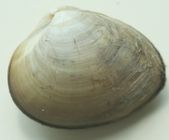
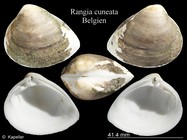
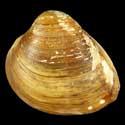
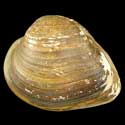
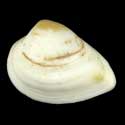
.jpg)


